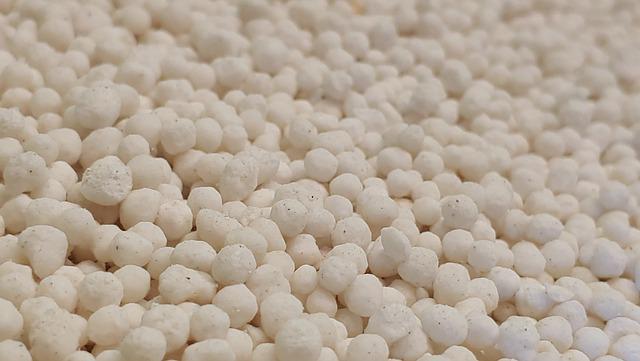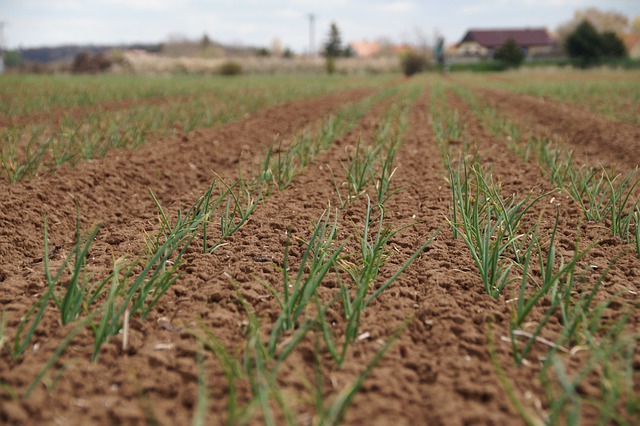NPK in Fertilizers: What You Need To Know

The nutrient content of chemical and organic fertilizers is displayed in bold numbers on the package. These numbers represent three compounds: Nitrogen, Phosphorous, and Potassium (Potassium). If a product is marked “10-10-10,” it’s made up of 10% nitrogen, 10% phosphorus, and 10% potassium. Find out more about NPK in fertilizers. Keep reading!
Table of Contents
The Function of Each Plant Nutrient
An overview of each nutrient’s contributions to plant growth is provided below.
Nitrogen
A plant’s coloring and chlorophyll production are greatly influenced by nitrogen, the first number in the NPK sequence. As a result, nitrogen is an essential factor in the development of leaves. Fertilizers high in nitrogen are frequently used on grass or other plants where the growth of green foliage is more important than the production of flowers. In contrast, gardeners may occasionally encounter the problem of nitrogen depletion, which manifests itself in the yellowing of commonly green plants, which indicates that the plants have a nitrogen deficiency.
Phosphorus
The percentage of phosphorous in a fertilizer product is represented by the middle number in an NPK series. Phosphorus is an essential nutrient for your plants in the spring because it aids in the development of roots, flowers, and fruit production. Phosphorus plays a vital role in various fundamental plant processes, including rooting and seed formation.
Potassium
When looking at the list of the primary ingredients, the final number indicates the percentage of potassium present in the product. Among other things, potassium helps maintain the overall health and vigor of plants. In addition to helping plants resist disease, it is known to aid in the movement of water and nutrients within the plant. It can be especially beneficial in areas that experience cold or dry weather. It is also known to help plants grow more quickly.

What Is the Difference Between NPK in Complete, Balanced, and Incomplete Fertilizers?
Complete Fertilizer
A complete fertilizer has some nitrogen, phosphorus, and potassium, so it’s called a “full.” Because the three numbers aren’t the same, a fertilizer with an NPK of 24-16-8 is still a complete fertilizer, even though they aren’t even.
Balanced Fertilizer
There must be equal amounts of each nutrient in a “balanced” fertilizer. Examples of fertilizers with the numbers 10-10-10 on them would be a 10-10-10. It’s not the best idea to use a balanced fertilizer because plants don’t all use nutrients simultaneously, and your soil might not need phosphorus or potassium.
Incomplete Fertilizer
Incomplete fertilizers are deficient in one or more of the three essential nutrients. A 13-0-0 NPK fertilizer is a nitrogen-only fertilizer.
History of N-P-K Ratio
The history of NPK ratios can help us better understand fertilizer. What happened to them? Who decided to use the 10-5-5 formula? Is it suitable for all plants?
Several years ago, a fertilizer manufacturer decided to promote the idea of a balanced fertilizer and came up with the arbitrary decision that a 10-10-10 formula would be effective. No scientific evidence was used in this marketing strategy. Customers embraced the concept, and as a result, the term “balanced fertilizer” and the recommendation of a 10-10-10 formulation are now widely used. It makes sense on the surface. Because plants require equal amounts of nitrogen, phosphorus, and potassium, there’s no reason not to provide it to them.
Another company came up with the idea of promoting an actual plant-specific fertilizer to keep up with the competition. Scientists examined the content of various plants. If you have a lawn with high nitrogen content, the company developed an 18-10-10 lawn fertilizer. The birth of a new marketing strategy was witnessed. Fertilizers should be tailored to the plant’s specific needs.
The discovery that plants use a large amount of phosphorous to produce blooms and roots prompted fertilizer manufacturers to create bloom boosters and starter fertilizers like 10-52-10. This concept made sense to me as well. Ensure that plants receive the proper amount of fertilizer at the appropriate time. To expedite the establishment of new roots after transplantation, starter fertilizer is applied. Once a plant has been established, it can be given a higher nitrogen fertilizer because it is now focused on regrowing leaves. To boost phosphorus levels at bloom time, switch back to a 10-52-10 fertilizer.
Gardening experts were quick to jump on board with the avalanche of new fertilizer formulations that resulted from these developments in fertilizer development. Each type of plant was given a specific fertilizer recommendation based on its needs at different times of the year. Many books and websites still use these recommendations, but they are incredibly confusing.
Do Plants Need Fertilizer?
Hard-working plants like vegetables and some flowering roses and those that grow in pots or on sandy soils can benefit from extra help in the summer. A healthy soil, especially regularly amended with organic matter like compost or manure, maybe all plants need.
Getting the right amount of fertilizer is important because too much can be as harmful as not enough. It’s also essential to think about what could happen to the rest of the world because too many synthetic nutrients can pollute water and hurt soil life.
Keep in mind that plants can only take in nutrients when the soil is wet. When the soil is dry, plants often show deficiency when all they need is water.
What Is the Most Appropriate NPK Fertilizer Ratio for My Plants?
Start by taking a soil test to figure out what fertilizer your plants need. This will help you figure out which macronutrients are in your soil and which nutrients you need to add to make it even better. Many lawns and gardens, for example, have plenty of phosphorous but may require more nitrogen. If this is the case in your garden, look for fertilizer ratios in which the first number, nitrogen, is greater than the second number, phosphorous. When applying fertilizer to your soil, including deficient nutrients, remember that plants get their nutrients from the soil.
What Happens When Plants Don’t Get Enough N-P-K?
The deficiency of N-P-K can cause a variety of problems for plants. Annuals like petunias and marigolds, as well as most vegetables, have a limited life span. They’re often called “heavy feeders” because of the large amounts of N, P, and K they take from the soil to fuel their rapid growth. Because of this, they tend to be the first to show signs of nutrient deficiency in the soil. Look out for the following signs:
Low nitrogen (N): Pale green or yellowing older leaves, undersized leaves, or weak or short stems.
Low phosphorus (P): Red or purple tinges to leaves that should be green or leaves with twisted or irregular shapes.
Low potassium (K): include wilting or dead lower leaves.
Fertilizers: Chemical vs. Organic
You’ll notice that the NPK numbers on both organic and chemical fertilizer labels don’t add up to 100%. Having said that, what else do you put in your fertilizer? It all depends on the fertilizer you’re using.
Chemical fertilizers can contain dirt, sand, and even potentially hazardous materials that may harm your health or the environment. To protect your plants, skin, and anything else they come into contact with, chemical fertilizers need to include these fillers.
Because organic fertilizers are made up of various natural components, they don’t necessarily contain fillers. Chemical fertilizers also contain nutrients and are extracted in a certain way that should be considered. Typical nitrogen found in chemical fertilizers dissolves quickly in water. As a result, groundwater and freshwater sources may become contaminated with excess nitrogen.
Many chemical fertilizers are now using phosphoric acid to quickly and cheaply increase their phosphorous content. Garret claims that this phosphorous neutralizes essential trace minerals from the soil that your plants require.
It is also important to be aware that the potassium in many chemical fertilizers can be harmful to your plants if they are misapplied. If you use organic and natural fertilizers, you can expect to see slow but steady improvement in the health of your plants, even if their NPK numbers are lower. Chemical fertilizers, which can make plants weaker by promoting rapid growth and flowering, are not used. As a result, a fertilizer with a high NPK content does not necessarily mean a better one.
Fertilizer-Free Planting Options
Your yard or garden may only require a small amount of fertilizer. According to many professional gardeners, there is little to no need for additional potassium and phosphorus in our soils.
We can liberate these elements with proper soil aeration, drainage, beneficial soil organisms, etc. As long as your soil is properly cared for, organic fertilizers with NPK labels showing low or even zero numbers for potassium and phosphorus are adequate for your garden.
If your soil lacks proper aeration, mineral nutrition, and other factors that allow plants to absorb phosphorous and potassium effectively, then adding a lot of phosphorous and potassium to your soil won’t do much good.
The soil doesn’t need additional nitrogen fertilizer to meet its needs in most cases. With a healthy soil full of beneficial microorganisms, it is possible to take advantage of the nitrogen in the air. Compost and soil amendments like Mycor root builder can help.
It’s also good to plant nitrogen-fixing legumes, like beans, in your garden. Plants need all the nutrients they can get, including NPK, from organic composts and manure that has been composted. The best way to feed your plants and give them what they need is to use compost. Fish, bone, alfalfa, bat guano, and earthworm castings are excellent sources of these nutrients.

